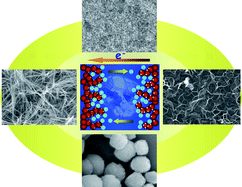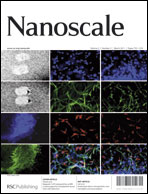The role of nanomaterials in redox-based supercapacitors for next generation energy storage devices
Abstract
The development of more efficient electrical storage is a pressing requirement to meet future societal and environmental needs. This demand for more sustainable, efficient energy storage has provoked a renewed scientific and commercial interest in advanced capacitor designs in which the suite of experimental techniques and ideas that comprise nanotechnology are playing a critical role. Capacitors can be charged and discharged quickly and are one of the primary building blocks of many types of electrical circuit, from microprocessors to large-sale power supplies, but usually have relatively low energy storage capability when compared with batteries. The application of nanostructured materials with bespoke morphologies and properties to electrochemical supercapacitors is being intensively studied in order to provide enhanced energy density without comprising their inherent high power density and excellent cyclability. In particular,

- This article is part of the themed collection: Nanoscale 10th Anniversary: Top Cited Articles

 Please wait while we load your content...
Please wait while we load your content...